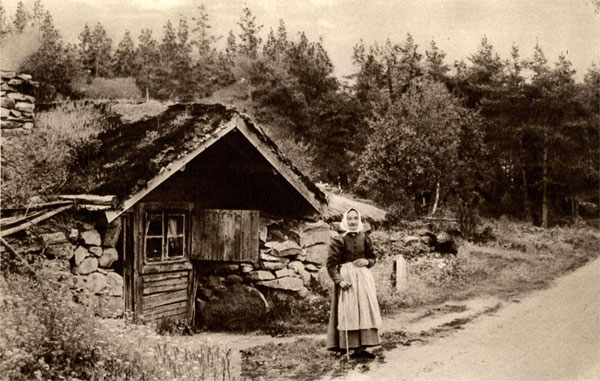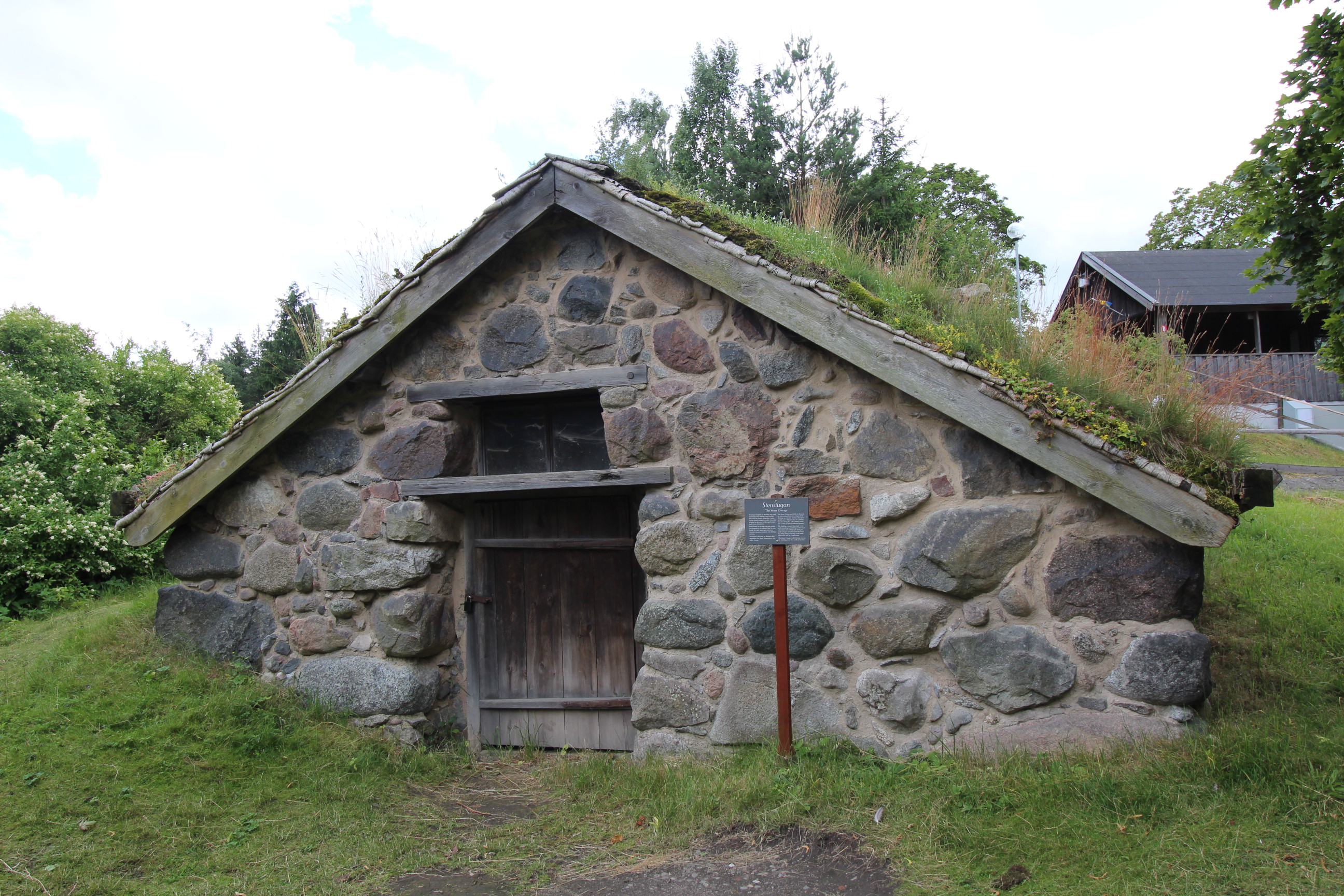Backstuga on:
[Wikipedia]
[Google]
[Amazon]

 A backstuga (literally "slope cottage") is a Swedish language judicial term, previously used in
A backstuga (literally "slope cottage") is a Swedish language judicial term, previously used in

Finland
Finland ( fi, Suomi ; sv, Finland ), officially the Republic of Finland (; ), is a Nordic country in Northern Europe. It shares land borders with Sweden to the northwest, Norway to the north, and Russia to the east, with the Gulf of B ...
and Sweden, for a kind of rural cottage.
Additionally, in architecture, a ''backstuga'' is a cottage built into the southern slope of a hill, alternatively with a low floor and its walls stretched halfway down into the ground. Such cottages are also referred to as ''jordstuga'' (earth cottage) or ''stenstuga'' (stone cottage). They were small, typically about , and only exceptionally found further north than Gothenburg. In the 20th century, the general poverty was mitigated and this kind of homes became less and less used.
In administrative respect, the legal meaning is a rural home with no land to farm that was built on someone else's property and without an own entry in the land registry. Its dwellers were called '' backstugusittare'' (slope cottage sitters) with a connotation of pauper. This phenomenon is known from the early 1600s and was disliked by the government seeing it as a way to evade taxes. The house may have been owned by the head of the family living there, but taxes were the responsibility of the land owner. Such cottages were typically raised on land useless for farming. Also the common land
Common land is land owned by a person or collectively by a number of persons, over which other persons have certain common rights, such as to allow their livestock to graze upon it, to collect wood, or to cut turf for fuel.
A person who has a ...
of the village, or that of the parish, were usual spots.
A backstuga in this judicial meaning may have been inhabited by craftsmen
Craftsman may refer to:
A profession
*Artisan, a skilled manual worker who makes items that may be functional or strictly decorative
* Master craftsman, an artisan who has achieved such a standard that he may establish his own workshop and take ...
, and not necessarily small, or by those of the peasantry not active in the productive life of the community, such as old people who could no longer work, retired servants and the community destitute who had no relatives to care for them. In practice, although legally forbidden until 1846, a parish may have offered to pay for a backstuga-dwelling to a pauper instead of offering a place in a poor house
A poorhouse or workhouse is a government-run (usually by a county or municipality) facility to support and provide housing for the dependent or needy.
Workhouses
In England, Wales and Ireland (but not in Scotland), ‘workhouse’ has been the ...
, that all parishes didn't care to organize. The legal alternative, called rotegång Rotegång ('Walk the parish') or ''kringgång'' ('Walk around') was a historical form of poor care in the history of Sweden to support the very poorest in the peasant community.
Rotegång was practiced in the Swedish countryside already in the Midd ...
, was to let the poor wander from farm to farm, following a strict scheme staying one or a few days at each. But its popularity waned.
Technically, also a farmer whose farm was taken over by a son or a son-in-law, was registered as housed either by the son or in a ''backstuga.'' But here the word is used in the population registry
Civil registration is the system by which a government records the vital events (births, marriages, and deaths) of its citizens and residents. The resulting repository or database has different names in different countries and even in differ ...
and in a statistical context. In church records, the term is ''undantagsman'' (or ''undantagsänka'' for a widow), which contrary to ''backstugusittare'' do not confer any social stigma
Social stigma is the disapproval of, or discrimination against, an individual or group based on perceived characteristics that serve to distinguish them from other members of a society. Social stigmas are commonly related to culture, gender, ra ...
.
See also
*Torp (architecture)
A is a type of croft emblematic of the Swedish countryside. It comes from the Old Norse . In modern usage, it is the emblematic Swedish summer house, a small cottage painted Falu red and white, and evidence of the way in which urbanization came ...
References
{{ReflistOther sources
* Svensk uppslagsbok * Nils-Arvid Bringéus: Arbete och redskap kap. 11. Byggnadsskick Building History of agriculture Social history of Finland Social history of Sweden